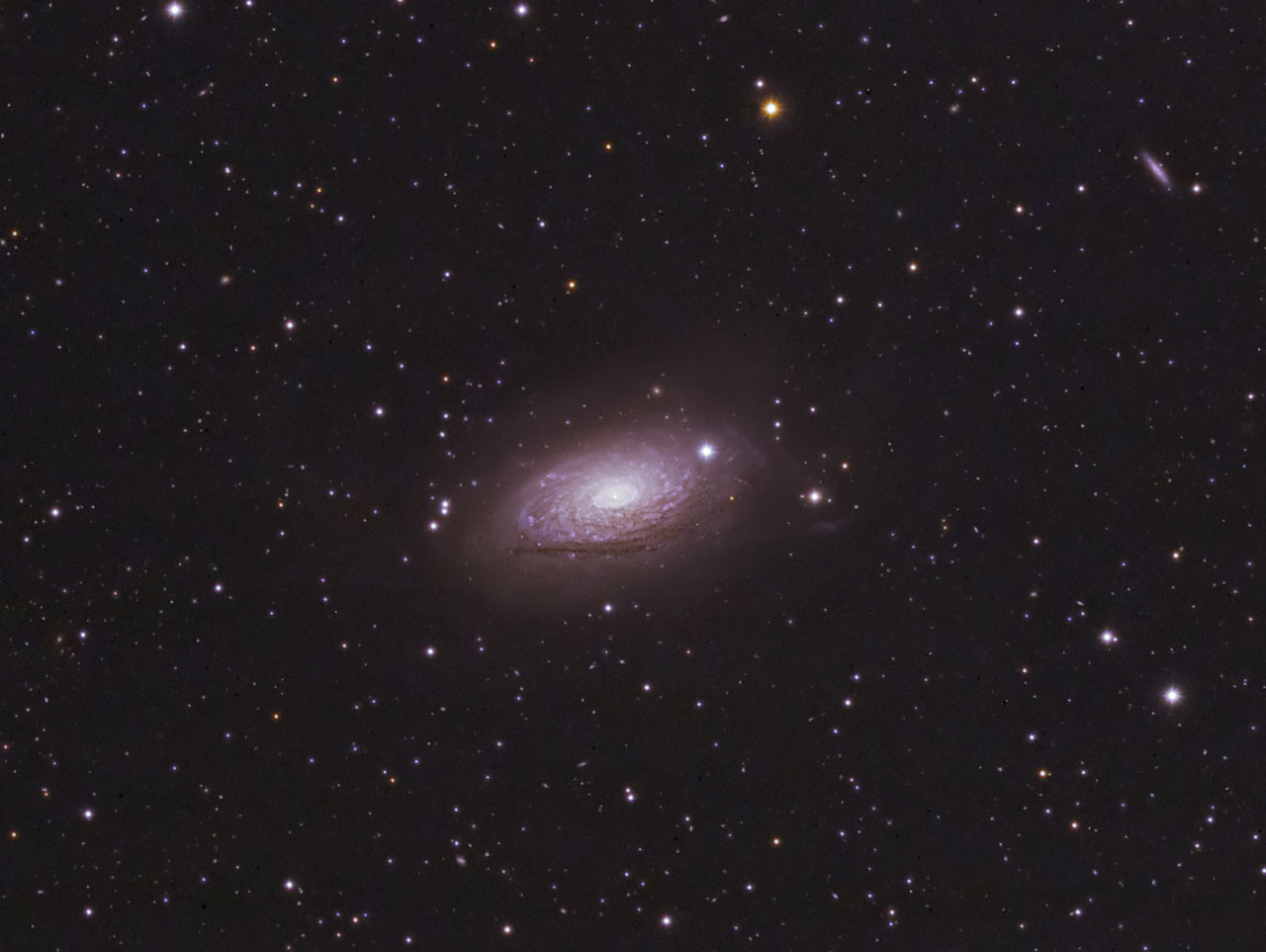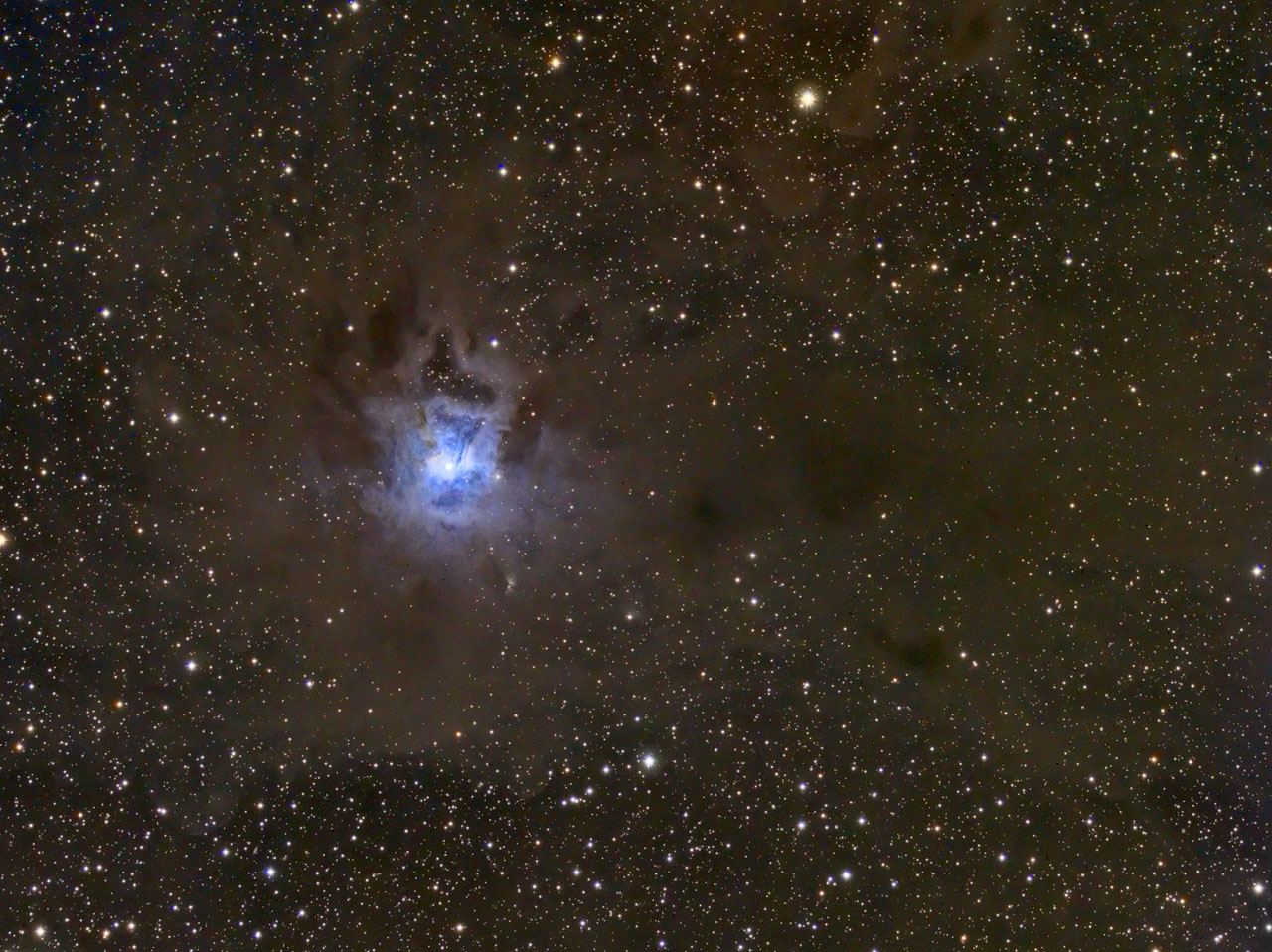The Sunflower Galaxy (M63) is a large, but very distant galaxy in the constellation Canes Venatici. At a distance of about 27 million light-years, it is amazing that we can see this much detail. In fact, I rarely photograph galaxies because most of them are so small that it requires excellent conditions (very dark skies and low turbulence) to get a decent image. I shot this at last week’s star party, using the William Optics FLT-132. This is actually cropped quite a bit and includes less than half of the full frame. You can see another galaxy in the upper right corner, PGC 45992, and there are several smaller galaxies as well, although they are hard to spot in this small version of the image.
The star party was not a great success – there was about 1.5 good nights. Specifically, one quite good night and one that was only half good. I captured the color data on the half-good night, because it doesn’t need to be super sharp, then added a couple of hours of luminence data on the good night. This was a great example of why purchasing the FLT-132 was a good idea: With the previous telescope the luminence data would not have been this sharp, due to chromatic aberration.
I also managed to capture some luminence data for the Iris Nebula that same night (I would have continued on M63, but it was getting too low in the sky). There wasn’t enough time before sunrise to get any color data, so the image below was created using color data from last year:
As you may know, I have photographed the Iris Nebula (NGC7023) many times before. Hopefully, each attempt produces slightly better results. I’m pretty happy with this one, although more time on it would decrease the noise in the brown dust areas. In this case, the noise is heavily filtered, so it’s more precise to say that spending more time on it would allow for more detail in the dim areas.
The bright blue region is really made up of the same brown dust, but is reflecting the light of a very bright, and very blue star, which you can see near the center of the blue dust. I keep coming back to this target because it’s so beautiful – and challenging.
Summer is almost here, which means that the nights start getting longer. Right now I can only get 4.5 hours of capture time per night, and only on nights with clear skies. And for broadband images such as these, only when there is no Moon out. This is why the best star parties are in late Summer, when the weather is still good, but the nights are long enough to get things done. I’m really looking forward to this year’s Oregon Star Party in August.

